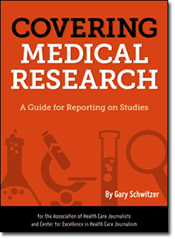Writing for Sports Illustrated, David Epstein tells the story of a small-scale Indiana football concussion study in which in which the youth in the control group unexpectedly became the headliners. The researchers were using functional MRIs and the popular ImPACT test, along with helmet-mounted accelerometers, to figure out what sort of hits cause concussions and how the consequences of such hits vary.

Photo by Les_Stockton via Flickr
Their first discovery? That “no particular magnitude of hit correlated with a concussion.” In fact, the youth they studied were suffering from very few concussions. It wasn’t until they started testing the unconcussed youth, as a sort of control, that they started seeing the results that have come to define their study, the full text of which is available online. Epstein again:
Of those eight [unconcussed youth], four nevertheless showed significant declines in visual memory. In fact, the players with the most impaired visual memory skills were not coming from the concussed group but from a group that in the week preceding the test had taken a large numbers of hits—around 150—mostly in the 40 to 80 G range
If the test scores were accurate, the researchers had inadvertently documented, in real time, a new classification of high school athlete: a player who was never concussed, was not verbally impaired and was asymptomatic even as far as his parents could tell, but whose visual memory was more impaired than his amnesic, headachy, light-sensitive, concussed teammates.
Researchers discovered one other surprise: The players who were asymptomatic but had impaired visual memory had suffered hits to the upper forehead, “which houses the dorsolateral prefrontal cortex – where linemen get hit, play in and play out,” as opposed to the heavy hits to the side of the helmet that most of us associate with concussions.
It’s a very small-scale study – only 21 boys completed the study conducted over one football season – but the researchers are expanding their work this season. Nevertheless, Epstein indulges in some speculation:
Consider this: Concussions as we know them involve a hit that rattles a part of the brain involved in language processing or motor skills. Hits to the forehead that might be every bit as damaging hide their nefarious effects in the frontal lobe, a part of the brain primarily involved in visual memory, planning and cognition, rather than motor or sensory function, and thus not taxed by sideline concussion exams. Indeed, it’s possible that all along, while brain trauma questions have focused on concussions, the real damage is being inflicted by minor impacts that chip away at the brain.
In another piece in Sports Illustrated, Peter King looks at recent violent hits in the National Football League that have attracted attention, the NFL’s attempts to make the game safer and the fans’ and players’ attitudes about the game.
Online guide focuses on covering medical studies
Reporters are inundated with lures to cover the latest medical study or scientific conference paper. And there are some significant milestones being reached in medical research. But, more often, the information reaching the public is way too preliminary or even misleading, say those behind a new AHCJ reporting guide on covering health studies.
The guide will help journalists analyze and write about health and medical research studies. It offers advice on recognizing and reporting the problems, limitations and backstory of a study, as well as publication biases in medical journals and it includes 10 questions you should answer to produce a meaningful and appropriately skeptical report. This guide, supported by the Robert Wood Johnson Foundation, will be a road map to help you do a better job of explaining research results for your audience.





